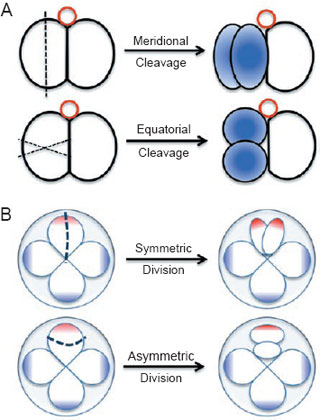I have a question about the canina meiosis and I can’t seem to find the answer immediatly. In this paper (Lunerová et al., 2020), they state that
"To cope with the abundant odd-ploidy, sect. Caninae evolved a peculiar reproductive system based on a type of asymmetrical meiosis called ‘canina meiosis’, which was described almost a century
ago (Täckholm, 1920, 1922; Blackburn and Harrison, 1921; Blackburn, 1925). Regardless of ploidy level, only 14 chromosomes pair in meiosis (seven bivalents) and are regularly distributed to the male and female gametes, while the remaining chromosomes are transmitted as univalents via the egg cell (Täckholm, 1922). Thus, male and female gametes contribute unequally to the chromosome complement of the zygote, resulting in a matroclinal inheritance of genetic material. These early cytogenetic observations are supported by molecular studies involving the transmission of microsatellite alleles and randomly amplified polymorphic DNA (RAPD) markers, deviations from standard embryo/endosperm genome size ratios (Kolarčik et al., 2018) and sequences of nuclear ribosomal internal transcribed spacer regions (nrITS) in interspecific hybrids (Werlemark and Nybom, 2001; Wissemann, 2002; Nybom et al., 2004, 2006; Ritz and Wissemann, 2011; Khaitová et al.,
2014). Despite this unique meiotic mechanism, the origin of sect. Caninae is not fully understood."
My question now is… let’s give the chromosomes a letter: A B C D and E. Before yesterday, I thought that during canina meisosis, it was always the same chromosomes, so ABCD that were used for the the matroclinal inheritance, and always E that was going through the paternal (pollen) line. But after a talk yesterday with a very good friend here I’m no longer sure of this.
So could someone help me out on this? Do we actually know if it are always the same chromosomes that are passed trough the maternal line and is it always the same chromosome that is passed through the paternal line or is it always another chromosomes? Or are it always the same 4 through the maternal line but not always the same one through the paternal? But even then… if it is not always the exact same chromosome, then after x generations of chrossings, A B C D and E can be replaced by A A A A A or whatever?
So I’m a bit confused right now… Anyone who can shine some light on this subject?
